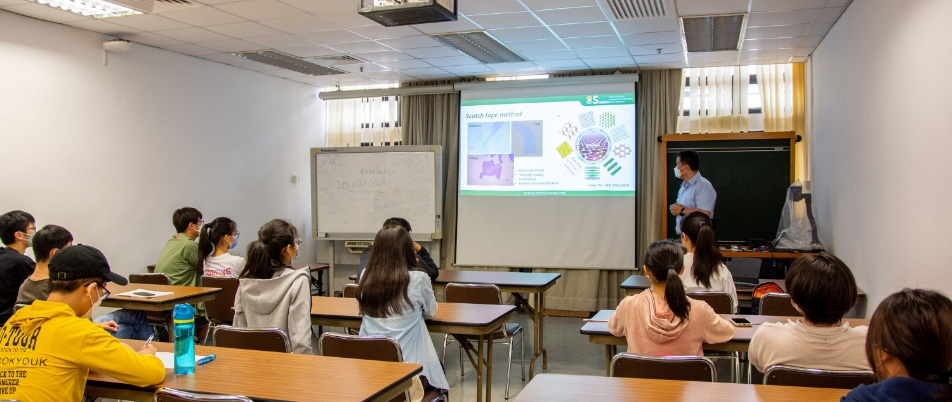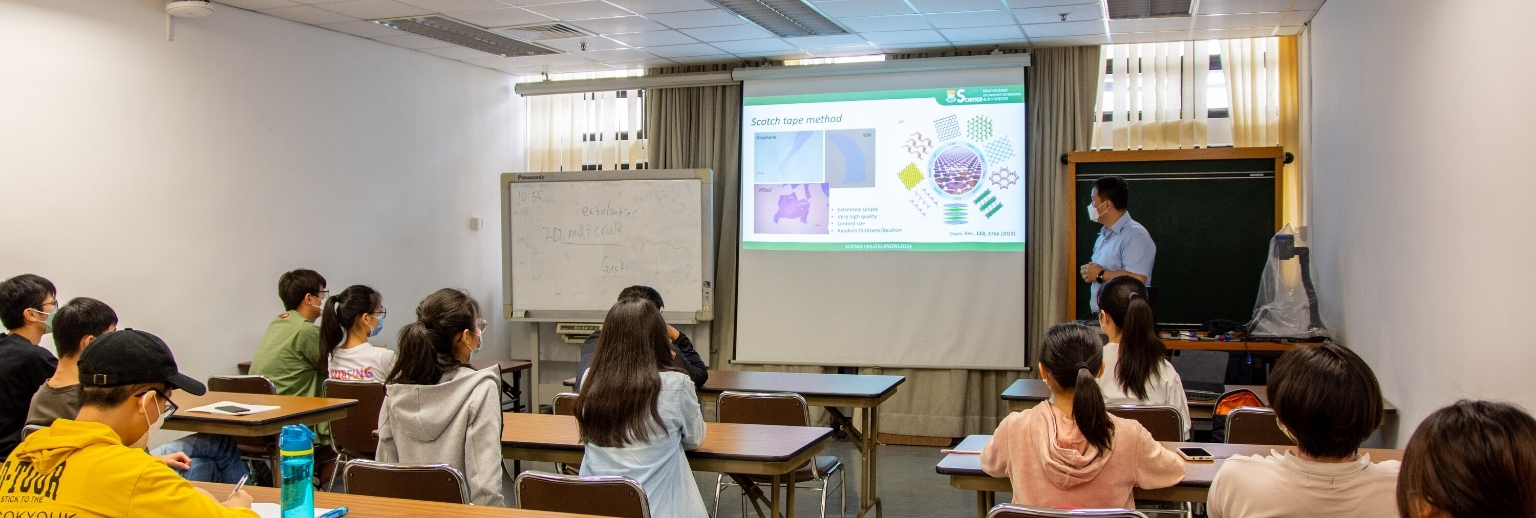MEDIA CORNER
Theoretical physicists from various international institutions including Prof. Z.Y. Meng and Dr. C.K. Zhou from the Department of Physics at HKU, have provided insight into the long-expected development of quasiparticles, which are similar to the well-known Dirac particles that obey the relativistic Dirac equation. The research recently published in Nature Physics proposed that these quasiparticles, also called Dirac spinons, reside in a brand-new quantum state known as a quantum spin liquid state. Their work was reported by different media:
A recent study led by the research group of Prof. L.X. Dai has discovered a novel method for detecting the first-generations stars, known as Population III (Pop III) stars, which have never been directly detected. This study was reported by different media:
A collaborative research team co-led by Prof. S. Zhang, the Interim Head of the Department of Physics, HKU, along with Prof. Q. Dai from National Center for Nanoscience and Technology, China, has introduced a solution to a prevalent issue in the realm of nanophotonics, which is the study of light at an extremely small scale. It was reported by different media:
A team of international scientists, including Dr. S.C.Y. Ng from the Department of Physics at The University of Hong Kong (HKU), collaborated with NASA on research led by Nanjing University, using NASA’s IXPE (Imaging ) telescope to capture the first polarized X-ray imagery of the supernova remnant SN 1006. The new results expand scientists’ understanding of the relationship between magnetic fields and the flow of high-energy particles from exploding stars. The discovery has been published in the esteemed Scientific Journal The Astrophysical Journal. It was also reported by different newspapers and media:
A team of international researchers led by The University of Hong Kong (HKU) and The University of Science and Technology (HKUST) including Prof. Z.Y. Meng from the Department of Physics, HKU has made a significant discovery in the field of quantum materials, uncovering the controllable nonlinear Hall effect in twisted bilayer graphene. The findings were published in the prestigious physics journal Physical Review Letters as an Editors’ Suggestion article, shed new light on the unique properties of two-dimensional quantum moiré materials and hold promise for a wide range of applications in industries such as new materials and quantum information to achieve terahertz detection with ultra-high sensitivity at room temperature.
A collaborative research team led by Interim Head of Physics Prof. S. Zhang from The University of Hong Kong (HKU), along with National Center for Nanoscience and Technology, Imperial College London and University of California, Berkeley, has proposed a new synthetic complex frequency wave (CFW) approach to address optical loss in superimaging demonstration. The research findings were recently published in the prestigious academic journal Science. It was reported by different newspapers and media:
Amruth Alfred, a PhD student in Dr. J.J.L. Lim’s group, he gave 3 outreach talks/interviews to the general public recently:
Amruth Alfred, a PhD student in Dr. J.J.L. Lim’s group, has led a study which has provided the most direct evidence yet that Dark Matter does not constitute ultramassive particles as is commonly thought but instead comprises particles so light that they travel through space like waves. Unveiling the true nature of dark matter, which manifests itself only through gravity, is one of the principal quests in physics. Leading candidates for dark matter are weakly interacting massive particles or ultralight bosons (axions), at opposite extremes in mass scales, that have been postulated by competing theories to solve deficiencies in the Standard Model of particle physics. Their work resolves an outstanding problem in astrophysics first raised two decades ago: why do models that adopt ultramassive Dark Matter particles fail to correctly predict the observed positions and the brightness of multiple images of the same galaxy created by gravitational lensing? Their research has shown that the general level of disagreement found between the observed and predicted positions as well as the brightness of multiply-lensed images generated by models incorporating ultramassive Dark Matter can be resolved by adopting models incorporating ultralight Dark Matter particles. Moreover, they demonstrate that models incorporating ultralight Dark Matter particles can reproduce the observed positions and brightness of multiply-lensed galaxy images, an important achievement that reveals the crinkly rather than smooth nature of spacetime around galaxies. The research findings were recently published in Nature Astronomy. The work was also reported by different newspapers and media:
Dr. Y. Yang has been selected as one of the 2022 Innovators Under 35 (China) by the MIT Technology Review, under the category of ‘Inventors’. This prestigious program recognises outstanding young innovators who are making significant contributions to their respective fields, and Dr Yang's selection is a testament to his exceptional research in the field of nanophotonics and optical physics. It was reported by different newspapers and media:
Dr. Y. Yang and other researchers have found a way to create much stronger interactions between photons and electrons, in the process producing a hundredfold increase in the emission of light from a phenomenon called Smith-Purcell radiation. The finding has potential implications for both commercial applications and fundamental scientific research. It was reported by different newspapers and media:




